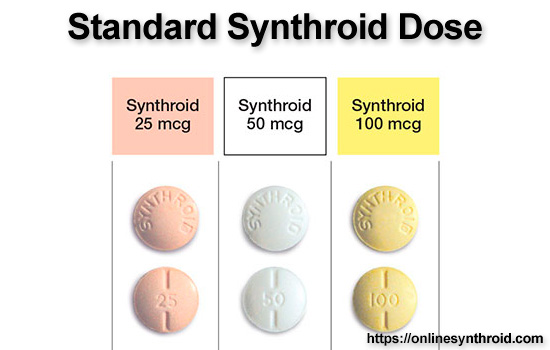Some patients complain that the standard Synthroid dose does not improve their condition, and ask to significantly increase the dosage. Usually, doctors refer such people to additional medical exams. However, in fact, a standard blood test does not always give a complete picture of the level of thyroid hormones. Thus, in some cases, a doctor should better trust the patient’s feelings and experiment with the dosage of the drug.
Standard Synthroid doses might be ineffective for approximately 15% of patients
This is a scientific fact. But researchers have guessed why this is happening relatively recently. To do this, they had experimented on mice. I will discuss it in detail below.
But first, I would like to explain how the thyroid hormone is metabolized in the body. To produce energy, the cells do not use T4, but T3, formed by the removal of one iodine atom from T4. The process of transformation of T4 into T3 depends on certain enzymes, deiodinases.

An abnormality in one type of deiodinase (deiodinase-2, D2) was responsible for the fact that a group of patients (approximately 15%) does not get the desired effect. As a result of taking a standard Synthroid dose, they still have symptoms of thyroid hormone deficiency. However, the clinical picture of the hormone T4 in the blood may seem perfect.
A study in mice that allows you to increase a standard Synthroid dose
The article was published in The Journal of Clinical Investigation. Its authors examined patients who reported that some of the symptoms of low T4 persisted. Scientists discovered in them the Thr92Ala-DIO2 genetic polymorphism: in the deiodinase-2 code, one amino acid (threonine) was replaced by another (alanine).
Since cells recognize this D2 as an abnormal protein, it gets expelled from the endoplasmic reticulum (ER) and accumulates in the distal parts of the Golgi apparatus. Normally, D2 should accumulate between the ER and the Golgi apparatus. But in such patients, deiodinase-2 takes away the iodine atom from T4 molecules, but at a much lesser extent than in ordinary people. Therefore, less T3 is produced. So, the symptoms of thyroid dysfunction do not go away.
Mice behavior and symptoms similar to the human ones
The authors of the article admitted that it would be difficult to investigate such a mutation in humans. Therefore, to begin with, they took mice with a similar mutation, and examined the subject on them.
As a result, the symptoms in mice coincided with human ones. They slept four times longer, didn’t move much, didn’t walk on the cage, didn’t play. In addition, they had memory problems.
It would be logical to explain this by the fact that these mice had hypothyroidism, despite the normal level of T4 in the blood. Hypothyroidism in the brain of such mice was most pronounced in the striatum, prefrontal cortex and amygdale, areas related to motivation and decision-making processes.




